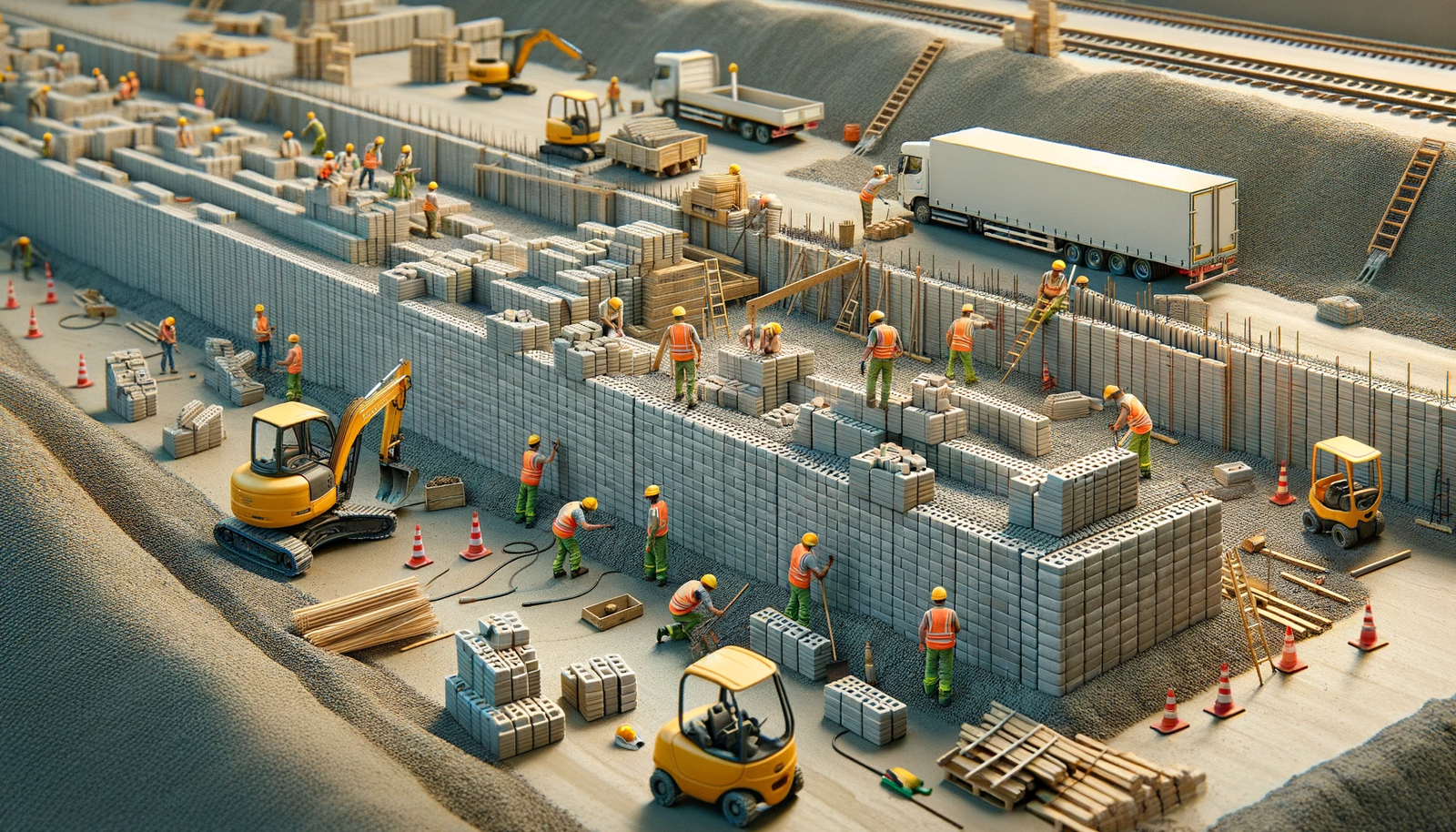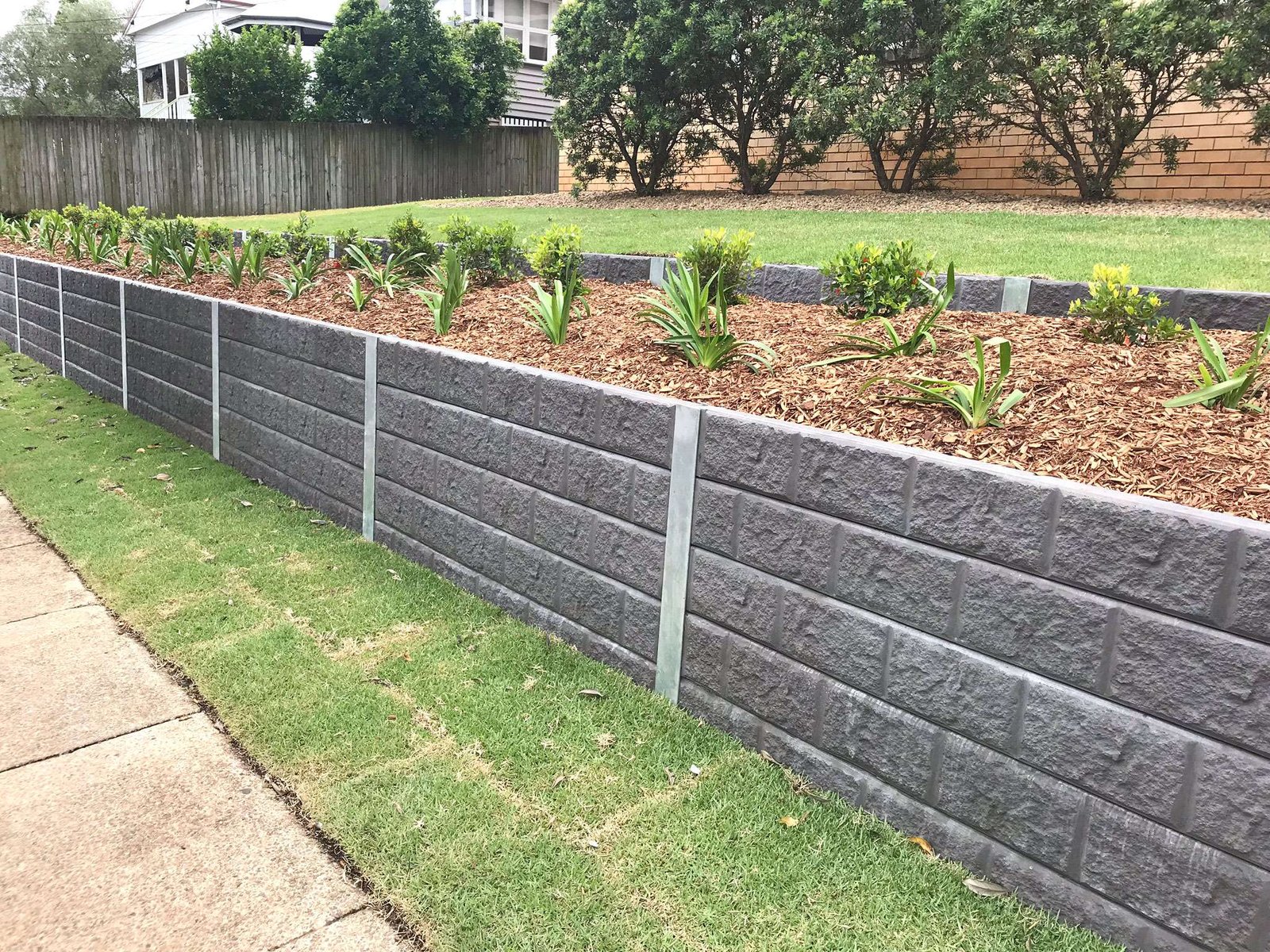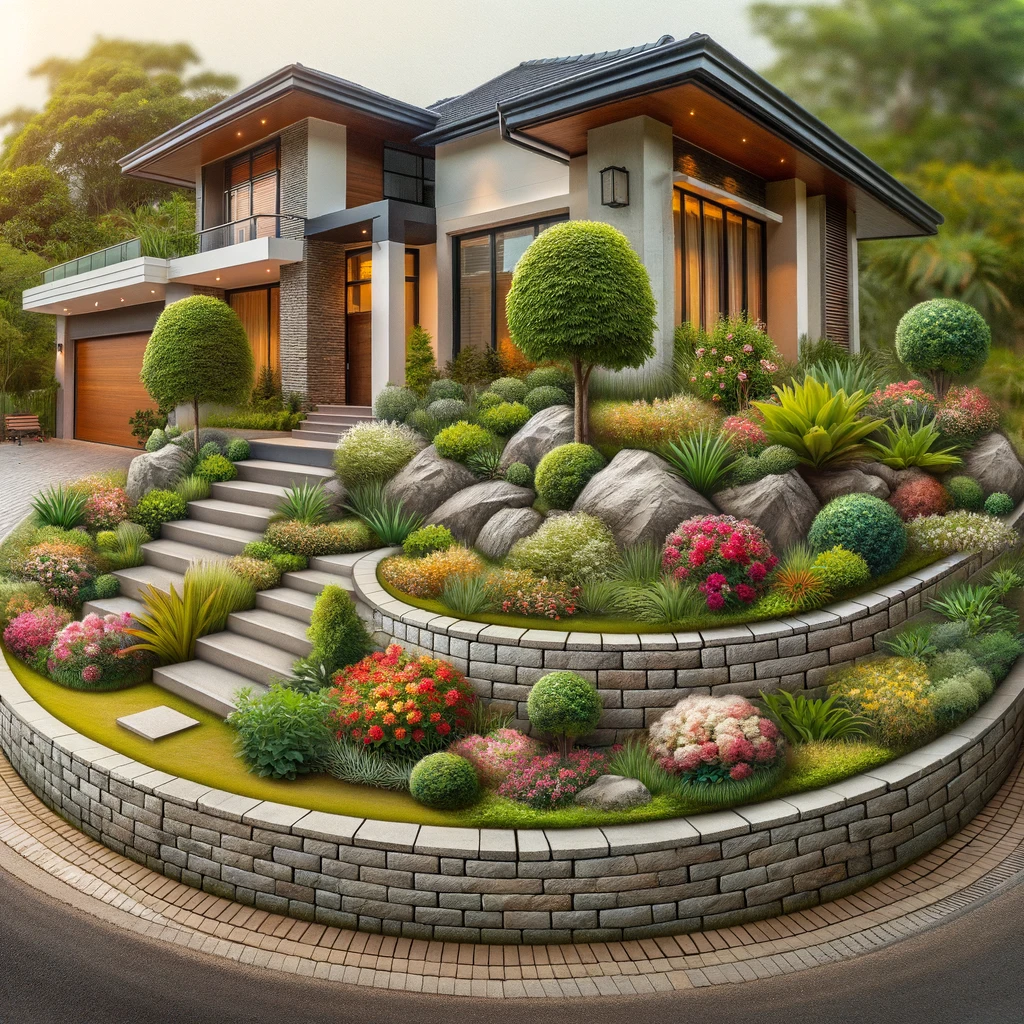Choosing the right material for your retaining wall not only ensures its functionality and stability but also enhances the aesthetic appeal of your landscape. This guide dives into the most popular materials used for retaining walls, discussing their advantages, drawbacks, and ideal applications to help you make an informed decision.
Concrete Blocks
Concrete blocks are a staple in retaining wall construction, appreciated for their durability and versatility. These blocks are engineered for strength, offering a long lifespan and minimal maintenance. Available in a variety of textures and colors, concrete blocks allow for flexibility in design while ensuring structural integrity.
Benefits:
- High durability and structural integrity
- Low maintenance requirements
- Aesthetic versatility with various textures and colors
Best For:
Homeowners seeking a reliable and aesthetically flexible option for their retaining walls.
Natural Stone
Natural stone retaining walls add a timeless beauty to any landscape, with each stone offering a unique color and texture. This option provides not only durability and strength but also an unparalleled natural aesthetic that blends seamlessly with outdoor environments.
Benefits:
- Unique aesthetic appeal with a variety of textures and colors
- Exceptional durability and longevity
- Natural appearance that complements any landscape
Best For:
Enhancing the natural beauty of gardens or landscape areas, ideal for those aiming to create a visually striking outdoor space.
Poured Concrete
Poured concrete walls are known for their strength and flexibility in design. They can be molded into any shape to suit specific landscape needs, offering a seamless and robust solution for retaining soil. Poured concrete is highly resistant to weathering and erosion, making it a durable choice for any environment.
Benefits:
- High strength and adaptability to any shape
- Long-lasting with excellent resistance to elements
- Smooth, contemporary appearance
Best For:
Modern landscapes or areas that require strong, continuous structural support.
Timber
Timber offers a warm and natural aesthetic, making it a popular choice for residential gardens. While it brings a rustic charm to any outdoor space, timber requires more maintenance than other materials, including treatments to prevent rot and termite damage.
Benefits:
- Warm, natural aesthetic
- Relatively easy to install and work with
- Eco-friendly, especially when sourced sustainably
Best For:
Creating a cozy and inviting outdoor space, particularly in rustic or woodland-themed gardens.
Gabion Baskets
Gabion baskets, wire cages filled with rock or stone, provide a unique and flexible solution for retaining walls. They allow water to flow through, reducing pressure on the wall, and can adapt to changes in the landscape without cracking or breaking.
Benefits:
- Environmentally friendly and permeable
- Flexible design that adapts to ground movement
- Aesthetic interest with natural stone fill
Best For:
Landscapes requiring erosion control and a distinct aesthetic touch, especially in natural or rustic settings.
Brick
Bricks offer a classic look for retaining walls, available in a range of colors to match or complement any property’s exterior. They require a foundation and proper drainage to ensure longevity but can add significant charm and value to a home.
Benefits:
- Traditional aesthetic with a wide color range
- Durable when maintained properly
- Suitable for both traditional and contemporary designs
Best For:
Retaining walls that enhance or match the architectural style of a home, adding a sense of elegance and tradition.
Design Considerations
Choosing a material involves considering the site’s specific needs, including soil type, climate, and desired aesthetic. Each material offers distinct advantages, but the right choice depends on your project’s unique requirements.
Maintenance and Longevity
To ensure the longevity of your retaining wall, select a material that matches your willingness to perform maintenance. While some materials, like concrete and stone, require minimal upkeep, others, like timber, may need regular treatment.
Cost Analysis
The cost of retaining wall materials varies widely, from the relatively inexpensive timber to the more costly natural stone. Consider not only the upfront cost but also the long-term maintenance and lifespan of the material.
Conclusion
The right material choice for your retaining wall can enhance your property’s value and beauty while providing essential structural support. Whether you prioritize durability, aesthetic appeal, or both, there’s a material that fits your needs.




